Updated to reflect results of 2018 election, the 2019 appointment of Justice Devaney, and the 2020 and 2022 elections.
In the 2018 election, Kristi Noem made history as the first woman to be elected South Dakota’s chief executive. It was a major milestone for women in South Dakota politics, and it happened 100 years and 1 day after women won the right to vote in the state.
Here is a look at the “first women” to hold other offices in South Dakota. (An earlier post looked at the six women who have previously run for governor.)
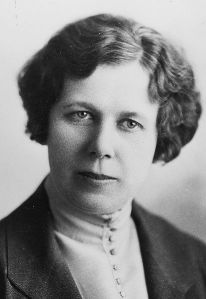
1923-27: Gladys Pyle of Huron is the first woman to serve in the South Dakota State Legislature. A Republican, she was elected to the State House in 1922 and reelected in 1924. Pyle was born in Huron in 1890. She lived in the same house for her entire 99-year life, until 1989. Pyle’s father, John Pyle, was attorney general from 1899 until his early death in 1902. Pyle’s mother, Mamie, was a leading suffragist in South Dakota. Since Pyle, 201 more women have served as state legislators, according to the Legislative Research Council historical listing, as of January 2021. (This post looks at the longest-serving women in legislative history.)
1927-31: Gladys Pyle is the first woman to serve in statewide office. She was elected secretary of state in 1926 and 1928. After Pyle, the secretary of state’s office was dominated by women; the next 14 secretaries of state were all women, through Joyce Hazeltine (1987-2003). Since that time, three men and two women have held the office; the incumbent, Monae Johnson, is the 17th female secretary of state.
1937-39: Jessie E. Sanders, a Rapid City Democrat, is the first woman to serve in the State Senate. She had previously served in the State House from 1933-37, and won a single senate term in 1936.
1938-39: Gladys Pyle is the first woman to represent South Dakota in Congress, after winning a special election to the U.S. Senate. U.S. Senator Peter Norbeck had been reelected in 1932, but died in late 1936, with just over two years remaining in his term. Gov. Tom Berry appointed fellow Democrat Herbert Hitchcock to fill the vacancy. Under South Dakota law at the time, the 1938 general election featured two elections for the Norbeck/Hitchcock seat: a special election to complete the term, serving from November 1938 to January 1939, and an election for the six-year term beginning in 1939. Pyle was nominated for the short term, and defeated Democrat John T. McCullen. The U.S. Senate did not meet during her brief tenure.
(A similar situation arose in 1948, when U.S. Senator Harlan Bushfield died just over three months before the end of his term. Gov. George T. Mickelson appointed Bushfield’s widow, Vera Bushfield to complete the term; she was also a former First Lady. Mrs. Bushfield served until December, when she resigned to make way for Karl Mundt, who had been elected to replace Bushfield. Gladys Pyle and Vera Bushfield are the only women to represent South Dakota in the U.S. Senate; no woman has been elected to a full six-year term.)
1945-47: Hazel Dean of Wessington Springs is first female state treasurer. E. V. Youngquist, the state treasurer, died in office and Gov. M. Q. Sharpe appointed Dean, the deputy state treasurer, to complete the term. Dean sought reelection in 1946 but lost the Republican nomination to Clarence E. Buehler.
A similar situation occurred in 1990 when Janis Kelley was appointed to replace State Treasurer Dave Volk, who had resigned. No woman has ever been elected state treasurer.
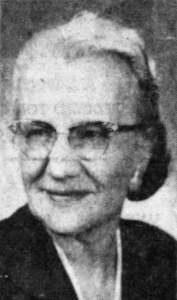
1959-61: Harriett Horning, a Watertown Democrat, is the first female state auditor. She was elected in 1958, a year in which Democrat Ralph Herseth was elected governor. Horning was an active Democrat and former South Dakota “mother of the year.”
1975-81: Norma Klinkel, a Brookings Democrat, is first female public utilities commissioner. Klinkel was elected in 1974 and didn’t seek reelection in 1980. Four women have followed Klinkel on the PUC: Charlotte Fischer (1977-83), Laska Schoenfelder (1989-2001), Pam Nelson (1997-2003) and current commissioner Kristie Fiegen, who has served since 2011.
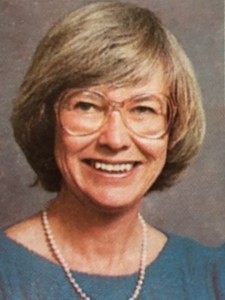
1979-89: Mary McClure, a Redfield Republican, is the first woman to hold a leadership position in the South Dakota State Legislature. A state senator from 1975-89, she was president pro tempore of the State Senate from 1979-89. Following the 1989 session, she resigned to serve in the White House as special assistant for intergovernmental affairs for President George Bush. She remains the only woman to be president pro tempore.
1987-88: Debra Anderson, a Sioux Falls Republican, is first female Speaker of the House. She served in the State House from 1977-89. From 1981-89, her father Dean Anderson served alongside her as a state representative from Bryant. Debra Anderson resigned in 1989 to be Deputy Assistant to the President and Director of Intergovernmental Affairs in the George Bush White House; the aforementioned Mary McClure was her assistant. Anderson remains the only woman to serve as Speaker. Anderson later served as Commissioner of Administration for Gov. Arne Carlson of Minnesota, before settling permanently in the DC area.
1987-90: Doris Miner, a Gregory Democrat, is the first woman to serve as assistant party floor leader, serving as the assistant senate minority leader. Miner had served in the House from 1977-78 and served in the Senate from 1979-92. Several women have followed Miner in serving as assistant floor leader.
1987-96: Jan Nicolay, a Sioux Falls Republican, is first woman to co-chair the powerful Joint Appropriations Committee. Nicolay served in the House from 1983-96. Two other women have followed in her footsteps as appropriations chairs: Jean Hunhoff of Yankton and Deb Peters of Hartford.
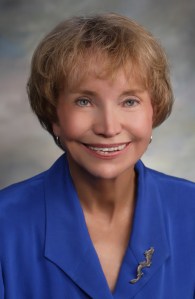
1995-2003: Carole Hillard is first female lieutenant governor. Hillard, a Republican, had served on the Rapid City Common Council and spent two terms in the State House. She remains the only woman to serve as lieutenant governor. She was elected on a ticket with Bill Janklow in 1994 and reelected in 1998.
2001-02: Barbara Everist is first female party floor leader. Everist, a Sioux Falls Republican, served in the State Senate from 1995-2003 after having served one term in the State House. Everist had been senate assistant majority leader in 1999-2000, the first woman to serve as assistant majority leader in either house. In 2018, Kris Langer was elected to serve as senate majority leader for the 2019 and 2020 sessions. Everist and Langer are the only women to have served as a party floor leader; no woman has served as House Majority Leader, or as the Democratic leader in either house.
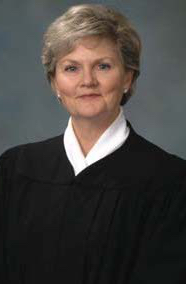
2002-11: Judith Meierhenry is first woman to serve as Justice of the South Dakota Supreme Court. She was appointed by Gov. Bill Janklow shortly before his term ended in 2002. Three women have since served on the Court: Lori Wilbur, who was appointed by Gov. Dennis Daugaard to succeed Justice Meierhenry and served from 2011-17; Janine Kern, who Gov. Daugaard appointed in 2015; and Patricia Devaney, who was appointed by Gov. Kristi Noem in 2019. From 2015-17, Justices Wilbur and Kern served together, the first time the Court had more than one female justice; since Justice Devaney’s 2019 appointment, two women once again serve on the five-member court.

2004-11: Stephanie Herseth, a Democrat, is first woman to represent South Dakota in the U.S. House of Representatives, and the first woman to be elected from South Dakota to a full term in either house of Congress. She was the granddaughter of Gov. Ralph Herseth and Secretary of State Lorna Herseth, and the daughter of R. Lars Herseth, a longtime legislator who had been the 1986 Democratic nominee for governor. Stephanie Herseth had run for House in 2002, losing to Gov. Bill Janklow, and after Janklow’s resignation in early 2004, was elected to succeed him. She took the name “Stephanie Herseth Sandlin” upon her 2007 marriage. In 2010, Herseth Sandlin lost reelection in 2010 to Kristi Noem, and in 2017 she became president of Augustana University in Sioux Falls. Noem is the second woman to serve in the U.S. House from South Dakota.
2018: Kristi Noem is the first woman elected governor. She took office on January 5, 2019, and was elected to a second term in 2022.
No woman has ever served as South Dakota’s attorney general or commissioner of school and public lands, or as chief justice.
